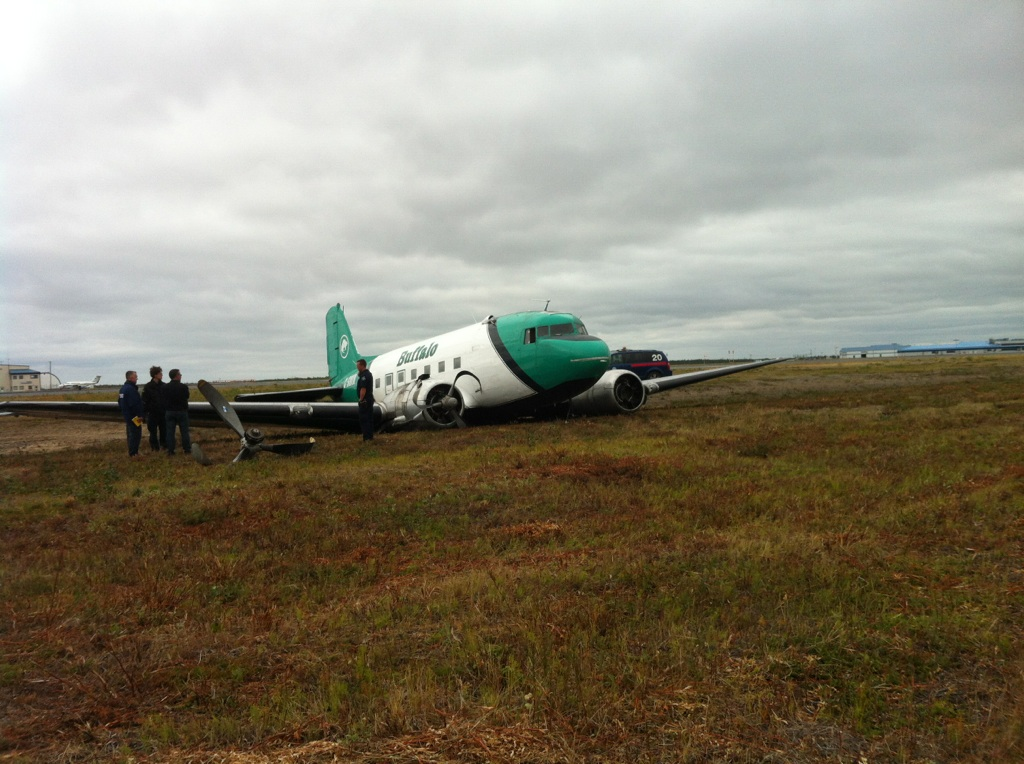Engine failure after takeoff and collision with terrain
Buffalo Airways Ltd.
Douglas DC-3C, C-GWIR
Yellowknife Airport, Northwest Territories
The occurrence
On 19 August 2013, a Buffalo Airways Ltd. Douglas DC-3C (registration C-GWIR, serial number 9371) was operating as a scheduled passenger flight from Yellowknife, Northwest Territories, to Hay River, Northwest Territories. After lift-off from Runway 16 at 1708 Mountain Daylight Time, there was a fire in the right engine. The crew performed an emergency engine shutdown and made a low-altitude right turn towards Runway 10. The aircraft struck a stand of trees southwest of the threshold of Runway 10 and touched down south of the runway with the landing gear retracted. An aircraft evacuation was accomplished and there were no injuries to the 3 crew members or the 21 passengers. There was no post-impact fire and the 406 MHz emergency locator transmitter did not activate.
Media materials
News release
Engine failure and an overweight aircraft led to the 2013 Buffalo Airways collision with terrain in Yellowknife, Northwest Territories
Read the news release
Deployment notice
Transportation Safety Board of Canada deploys investigators to air accident in Yellowknife, Northwest Territories
Edmonton, Alberta, 19 August 2013 — The Transportation Safety Board of Canada (TSB) will deploy a team of investigators to Yellowknife, Northwest Territories, where a Douglas DC-3 operated by Buffalo Airways landed short of the runway. No fatalities or serious injuries were reported. The TSB will gather information and assess the occurrence.
Investigation information
Download high-resolution photos from the TSB Flickr page.
Class of investigation
This is a class 3 investigation. These investigations analyze a small number of safety issues, and may result in recommendations. Class 3 investigations are generally completed within 450 days. For more information, see the Policy on Occurrence Classification.
TSB investigation process
There are 3 phases to a TSB investigation
- Field phase: a team of investigators examines the occurrence site and wreckage, interviews witnesses and collects pertinent information.
- Examination and analysis phase: the TSB reviews pertinent records, tests components of the wreckage in the lab, determines the sequence of events and identifies safety deficiencies. When safety deficiencies are suspected or confirmed, the TSB advises the appropriate authority without waiting until publication of the final report.
- Report phase: a confidential draft report is approved by the Board and sent to persons and corporations who are directly concerned by the report. They then have the opportunity to dispute or correct information they believe to be incorrect. The Board considers all representations before approving the final report, which is subsequently released to the public.
For more information, see our Investigation process page.
The TSB is an independent agency that investigates air, marine, pipeline, and rail transportation occurrences. Its sole aim is the advancement of transportation safety. It is not the function of the Board to assign fault or determine civil or criminal liability.
